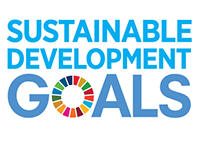Population Working in the Trades
Definition:
Proportion of Labour Force (15+) in Trades, National Occupational Classification (NOC)
Methods and Limitations:
The total labour force population aged 15 years and over by occupation refers to the kind of work performed by persons aged 15 years and over as determined by their kind of work and the description of the main activities in their job. The occupation data are produced according to the National Occupational Classification (NOC) for the relevant year. NOC codes may change over time.
The definition of trades occupations includes trades supervisors and contractors, construction and mechanical tradespersons, operators of transportation and heavy equipment and trades helpers. These occupations are found in a wide range of industrial sectors, with many in the construction and transportation industries.
Source(s):
Statistics Canada. 2022. (table). Census Profile. 2021 Census of Population. Statistics Canada Catalogue no. 98-316-X2021001. Ottawa. Released September 21, 2022.
Statistics Canada. 2017. Canada [Country] and Canada [Country] (table). Census Profile. 2016 Census. Statistics Canada Catalogue no. 98-316-X2016001. Ottawa. Released November 29, 2017.
Statistics Canada. 2013. Canada (Code 01) (table). National Household Survey (NHS) Profile. 2011 National Household Survey. Statistics Canada Catalogue no. 99-004-XWE. Ottawa. Released September 11, 2013.
Statistics Canada. 2007. Canada (Code01) (table). 2006 Community Profiles. 2006 Census. Statistics Canada Catalogue no. 92-591-XWE. Ottawa. Released March 13, 2007.

 Population Working in the Trades in the Sustainable Development Goals
Population Working in the Trades in the Sustainable Development Goals
Click on the SDG to reveal more information
8. Promote inclusive and sustainable economic growth, employment and decent work for all
Roughly half the world’s population still lives on the equivalent of about US$2 a day. And in too many places, having a job doesn’t guarantee the ability to escape from poverty. This slow and uneven progress requires us to rethink and retool our economic and social policies aimed at eradicating poverty.
A continued lack of decent work opportunities, insufficient investments and under-consumption lead to an erosion of the basic social contract underlying democratic societies: that all must share in progress. The creation of quality jobs will remain a major challenge for almost all economies well beyond 2015.
Sustainable economic growth will require societies to create the conditions that allow people to have quality jobs that stimulate the economy while not harming the environment. Job opportunities and decent working conditions are also required for the whole working age population.

